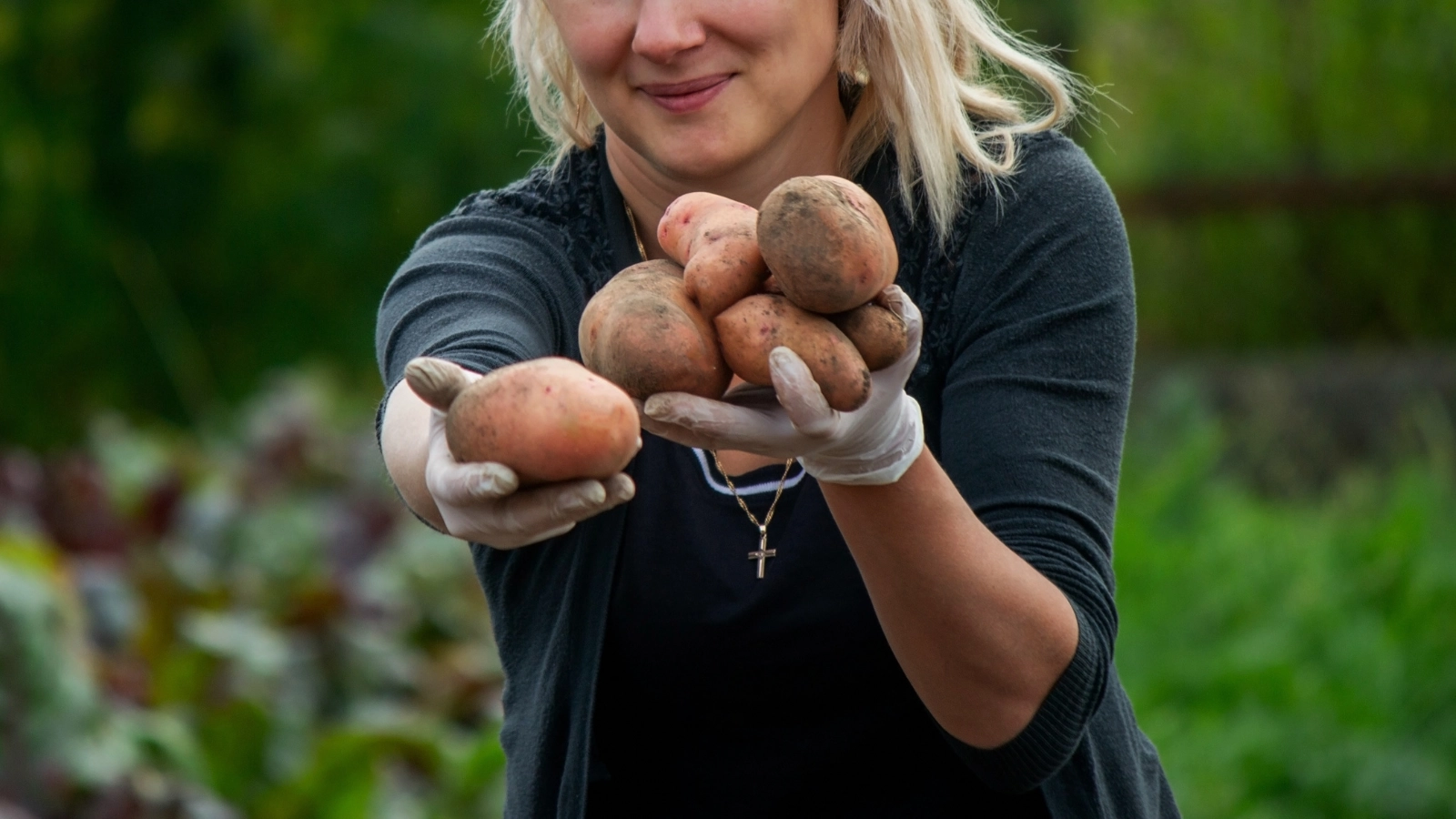Minnesota Homesteader Shares the SECRET To Grow Tasty Potatoes Year-Round!
A simple yet brilliant technique can transform your Minnesota garden into a potato-producing powerhouse, no matter the season. 🌐 #News #StPaulMN #Minnesota #HomeAndGarden
ST. PAUL, MN — Minnesota’s harsh winters, with temperatures often dipping below zero, make growing potatoes year-round seem impossible. The state’s short growing season—typically May to September—limits traditional outdoor gardening. Frost can kill potato plants, and frozen soil halts tuber growth. Even seasoned gardeners struggle to extend the harvest beyond fall. But what if you could defy the cold and enjoy fresh, homegrown potatoes in January? This article reveals a genius tip to make that dream a reality.
Why Potatoes Are Worth the Effort
Potatoes are a staple crop, versatile in the kitchen and packed with nutrients like potassium, vitamin C, and fiber. Homegrown potatoes taste better than store-bought, with a freshness that elevates dishes from mashed to roasted. Growing your own also saves money and reduces reliance on commercial produce. In Minnesota, where self-sufficiency is a point of pride, mastering year-round potato cultivation is a game-changer.
The Genius Tip: Indoor Container Gardening with a Twist
The secret to growing potatoes year-round in Minnesota lies in indoor container gardening, optimized with a unique lighting hack. By moving your potato crop indoors during the colder months, you bypass frost and snow entirely. The twist? Using affordable, full-spectrum grow lights programmed to mimic the sun’s natural cycle. This setup tricks potato plants into thriving as if it’s summer, even in the dead of winter.
Why Containers Work
Containers are ideal for indoor potato growing because they’re portable, space-efficient, and allow precise control over soil conditions. You can use large pots, grow bags, or even repurposed buckets—anything with drainage holes and at least 12 inches of depth. Containers also prevent the spread of soil-borne diseases common in outdoor gardens, ensuring healthier plants.
The Lighting Hack
Potatoes need 6-8 hours of sunlight daily to produce tubers. In Minnesota’s winter, natural light is scarce, with short days and weak sun. Full-spectrum grow lights solve this by replicating the sun’s wavelengths, promoting photosynthesis and robust growth. The key is programming the lights with a timer to cycle 14 hours on and 10 hours off, mimicking summer daylight. This encourages potato plants to focus energy on tuber production rather than stretching for light.
Step-by-Step Guide to Year-Round Potato Success
Ready to start? Follow these steps to grow potatoes indoors in Minnesota, no matter the season.
1. Choose the Right Potato Variety
Select early or mid-season potato varieties like Yukon Gold, Red Norland, or Kennebec. These mature faster (90-110 days) than late-season types, making them ideal for indoor cycles. Buy certified seed potatoes from a local nursery or online to ensure disease-free stock.
2. Prepare Your Containers
Fill containers with a mix of 60% potting soil and 40% compost for nutrient-rich, well-draining soil. Add a 4-inch layer to start. Cut seed potatoes into chunks with at least two eyes each, let them cure for 1-2 days, and plant them 3 inches deep, eyes up, spacing them 6 inches apart.
3. Set Up Grow Lights
Install full-spectrum LED grow lights 12-18 inches above the containers. LEDs are energy-efficient and produce less heat, reducing the risk of burning plants. Set a timer for 14 hours of light daily. Ensure the room stays between 60-70°F, using a small space heater if needed.
4. Care and Maintenance
As potato plants grow, add soil to cover stems, leaving the top leaves exposed—a process called “hilling.” This encourages more tuber formation. Water consistently to keep soil moist but not soggy. Fertilize every 2-3 weeks with a balanced, water-soluble fertilizer (10-10-10). Watch for pests like aphids and treat with neem oil if needed.
5. Harvest and Repeat
Harvest when plants yellow and die back, typically 90-120 days after planting. Gently dig out tubers, saving smaller ones as seed potatoes for the next cycle. With proper timing, you can stagger plantings every 3-4 months for a continuous supply.
Overcoming Common Challenges
Indoor potato growing isn’t without hurdles. Limited space can restrict how many containers you use, so prioritize vertical stacking or compact varieties. Grow lights increase electricity costs, but LEDs keep expenses low—expect a slight uptick of $10-20 monthly for a small setup. If plants grow leggy, adjust lights closer or increase light hours slightly. Ventilation is also key; a small fan prevents mold in humid indoor conditions.
Benefits Beyond the Harvest
This method does more than yield potatoes. It’s sustainable, reducing your carbon footprint by cutting reliance on shipped produce. It’s also a morale booster—tending green plants in winter combats seasonal blues. Plus, it’s a fun project for families, teaching kids about food systems and resilience.
Start Your Potato Revolution Today
With indoor container gardening and full-spectrum grow lights, Minnesota gardeners can grow potatoes year-round, defying the state’s brutal winters. This genius tip is simple, affordable, and effective, requiring only basic supplies and a bit of dedication. Imagine digging up fresh tubers for a February feast while snow piles up outside. Start small with one container, master the lighting hack, and scale up as you gain confidence. Your garden—and your plate—will thank you.
What’s stopping you? Grab some seed potatoes, set up your grow lights, and unlock the secret to year-round harvests in Minnesota!
RELATED TOPICS: Home and Garden | Lifestyle | Minnesota

